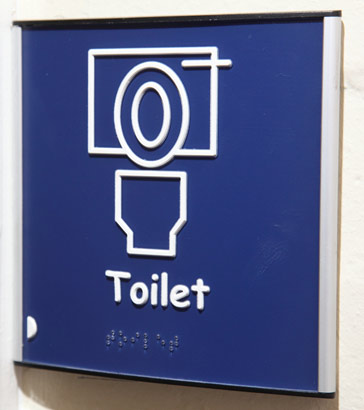
Achieving continence is a significant developmental milestone. Toileting and toilet training is hugely important to quality of life and, for a period of time, may need to be prioritised over time spent on academic areas.
Some children and young people with SLD/PMLD/CLDD will continue to require support with using the toilet throughout their school years. Others may arrive at school doubly incontinent but have the capacity to undertake toilet training and gradually achieve independence.

An individual's toileting routines should be detailed in their health care plan. Toileting may include the use of specific equipment such as hoists and changing beds/tables. Staff must be trained in their use. More than one adult may be needed to meet health and safety requirements.
Other professional involvement may include the school nurse, continence service (which may run clinics in school for parents to attend) and the physiotherapist and/or occupational therapist.
Organisational procedures around toileting will be laid down in a specific toileting policy or in related policies and guidance, eg
- Intimate care.
- Infection control.
- Moving and handling (people/objects).
- Safeguarding.
- Health and safety.
There is a need for a holistic approach to continence care, rather than just treating it as a temporarily dehumanising task-orientated aspect of care, as 'positive experiences' in this area can improve continence and the service user's overall quality of life.
Debenham, 2011

The following considerations are important for people receiving incontinence care and should be considered for children and young people with SLD/PMLD/CLDD:
- Feeling clean.
- Being cared for in a hygienic environment.
- Care that is willing, friendly and confidential.
- Care that is prompt, efficient, discreet and given with privacy.
- Staff awareness of and response to individual needs.
- Being given enough time (ie not rushed or fitted in), yet not left in discomfort.
- Gentle handling, which helps people to feel human, and those with painful conditions.
(Billings et al, 2009)


When full continence is not achievable, then healthy bladders and bowels should be promoted at all times. The child should be kept under review, with the provision of suitable containment products as appropriate.
Royal College of Nursing, 2006
For children and young people without restrictions on fluid intake:
- Children should be encouraged to drink water-based fluids.
- Children should be discouraged from drinking more than one pint of milk to the exclusion of solid foods.
- Children should drink six to eight cups - 250 mls - per day, and three of these should be within school hours.
(Royal College of Nursing, 2006)

Children with incurable bladder or bowel problems require access to specialist paediatric continence services. Their family, teachers and carers require training and support.
There are many problems to avoid and overcome:
- Skin care, odour, urinary tract infections, renal damage.
- Exclusion from education and school trips.
- Dependence on carers to go into school to change a soiled child (this contravenes the Equality Act 2010).
- Effects on family finances.
- Bullying.
- Isolation.
- Child protection - always be aware of the risk of many carers changing products or performing intermittent catheterisation, enemas, suppositories or anal irrigation.
(Bonner, 2010)

Department of Health (2010) National Service Framework for Children, Young People and Maternity Services – Continence issues for a child with learning difficulties (Case study + resources). London: Department of Health.
ERIC (Education and Resources for Improving Childhood Continence):
Education and Resources for Improving Childhood Continence (ERIC)/Health Education Trust (2006) Water is Cool in School (leaflet).

Leicester City Council/Council for Disabled Children (undated) Promoting personal development in foundation and key stage 1 - continence.
Promocon (Promoting Continence and Product Awareness) Promoting continence in schools:

Billings, J., Alaszewski, H., Wrag, A., Holdsworth, L., Brigden, C. and Jenkins, L. (2009) Privacy and Dignity in Continence Care: Phases 1 and 2. Canterbury: University of Kent/ Royal College of Physicians/British Geriatric Society.
Bonner, L. (2010) Why are paediatric continence services an essential service? (presentation).
Clark, J. (2009) Providing intimate continence care for people with learning disabilities, Nursing Times, 105 (6), 26-28.
Debenham, L. (2011) Incontinence and learning disabilities. Manor Park: About Learning Disabilities